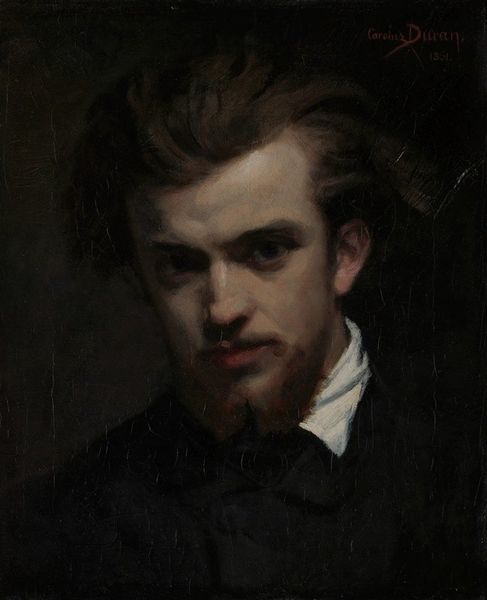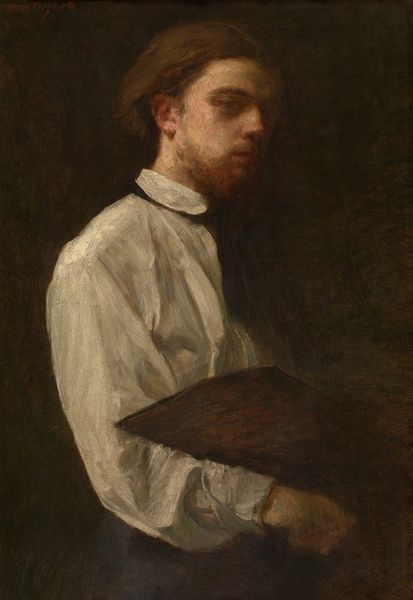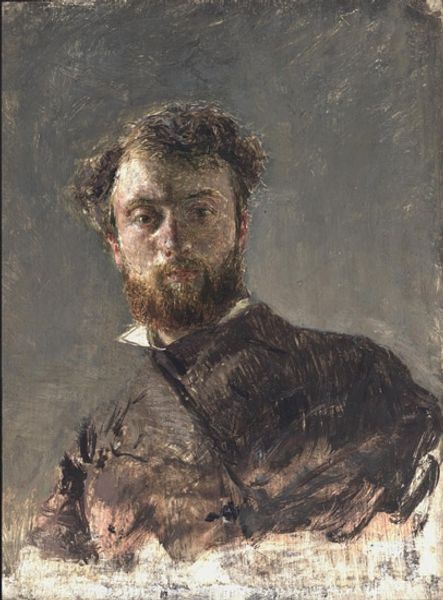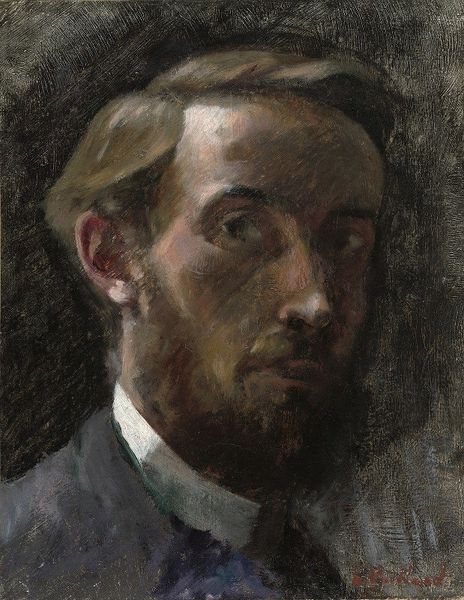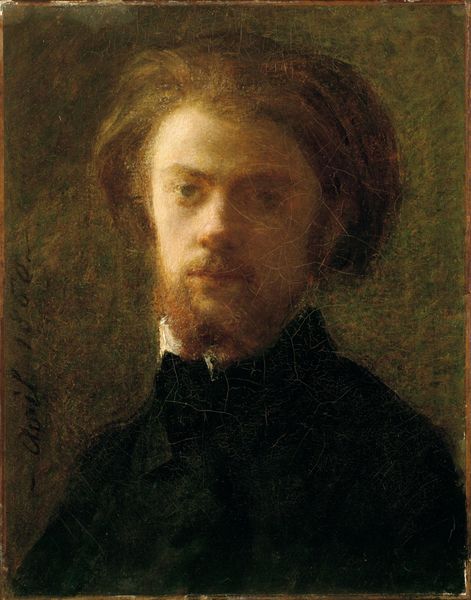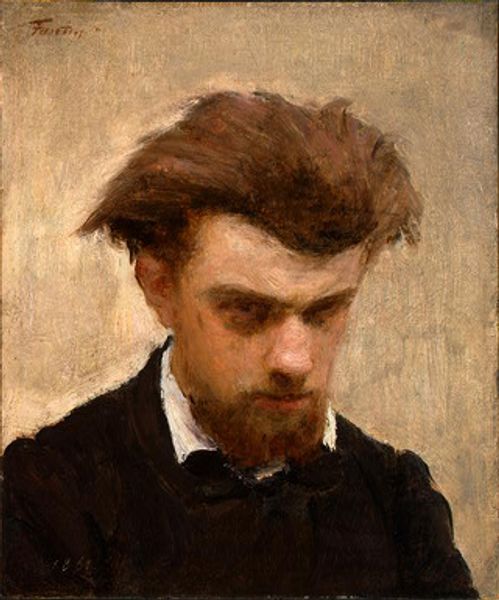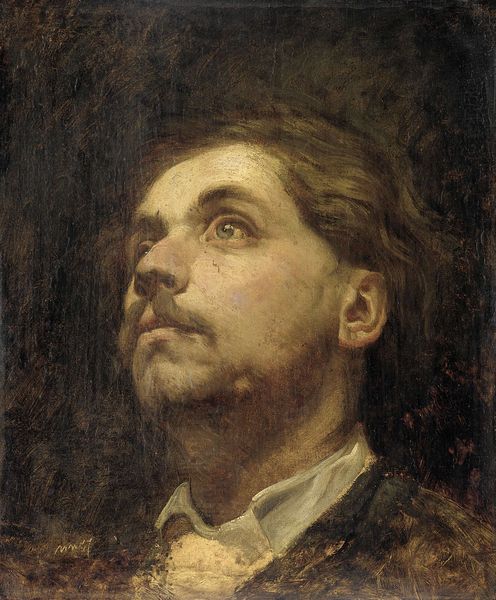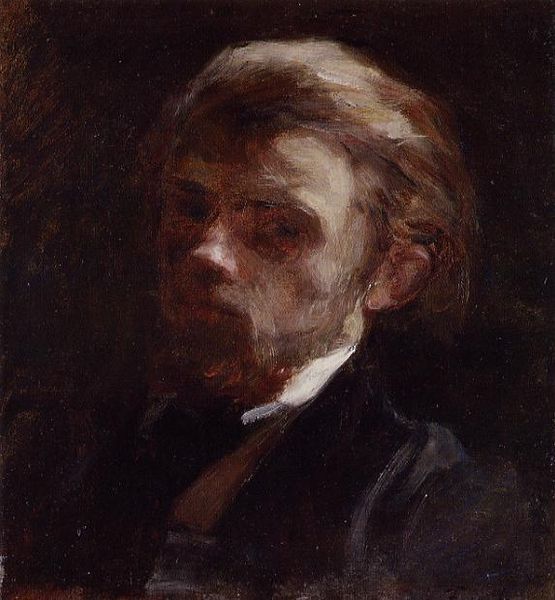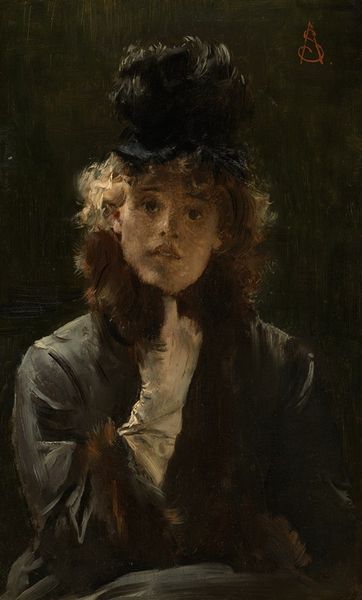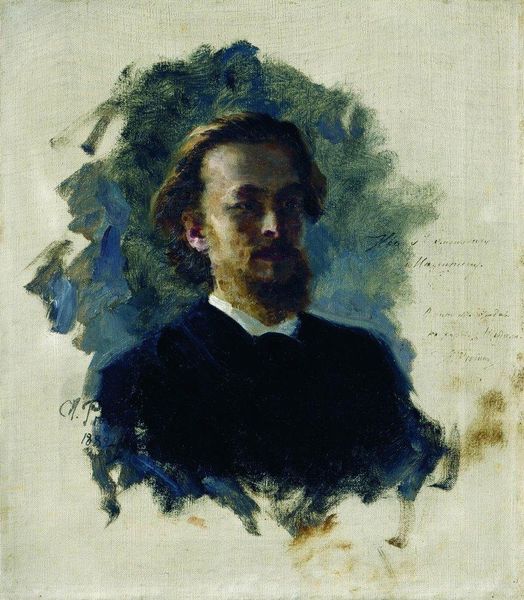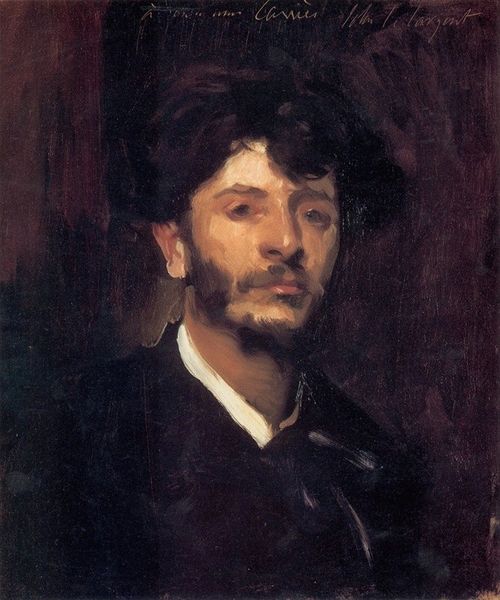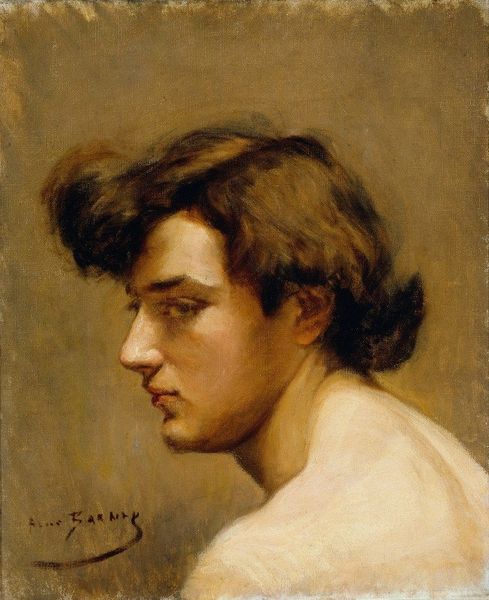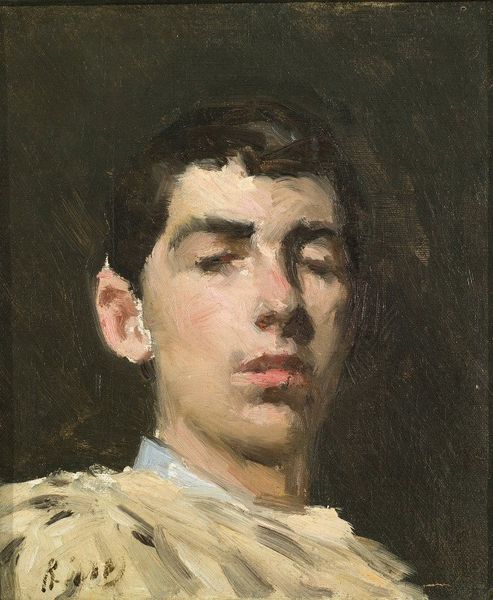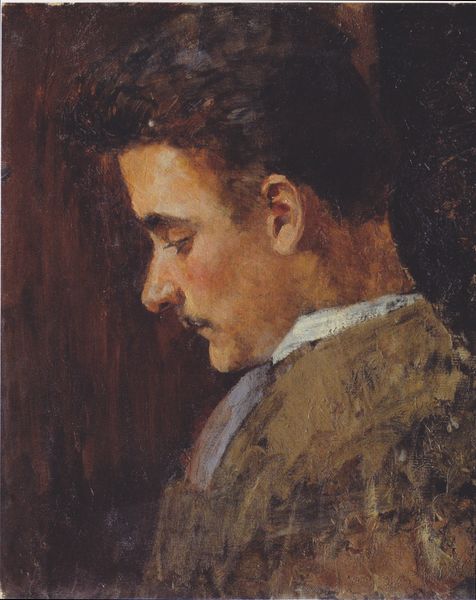
Copyright: Public Domain: Artvee
Editor: Here we have Henri Fantin-Latour’s Self-Portrait from 1858, crafted with oil paint. There's a definite moodiness about it, almost brooding, with that stark contrast of light and shadow. How do you interpret this work, particularly in its historical context? Curator: This self-portrait offers a compelling lens through which to examine the construction of artistic identity in 19th-century France. We see Fantin-Latour, a young artist positioning himself within the art world. He is caught between the Realist movement’s focus on everyday life and the emerging Impressionistic exploration of light and atmosphere. Consider the social expectations placed on male artists at this time: what did it mean to present oneself as both sensitive and serious? Editor: That's a really interesting point about expectations. I hadn't really considered it beyond the purely aesthetic. The way he almost obscures himself seems to play into that, too, maybe? Curator: Precisely. The shadowy lighting deemphasizes conventional beauty, suggesting intellectual depth and perhaps even a touch of rebellion against academic norms. Do you notice how his gaze, while direct, avoids full engagement? This creates a sense of introspection, aligning with the Romantic ideal of the artist as a solitary, thoughtful figure. What does that say about art’s cultural purpose at this time, to you? Editor: I suppose it reflects a shift towards valuing personal expression, a push against purely representational art. Curator: Indeed. And if we think about gender and representation, consider how women artists at the time were often denied this same level of introspective portrayal. This self-portrait subtly reinforces the power dynamics within the art world. Editor: Wow, that's a lot to think about. I definitely see it differently now, understanding how it speaks to artistic identity and broader social currents. Curator: Absolutely. By exploring these intersectional narratives, we gain a deeper appreciation for Fantin-Latour's work and its place in history.
Comments
No comments
Be the first to comment and join the conversation on the ultimate creative platform.
